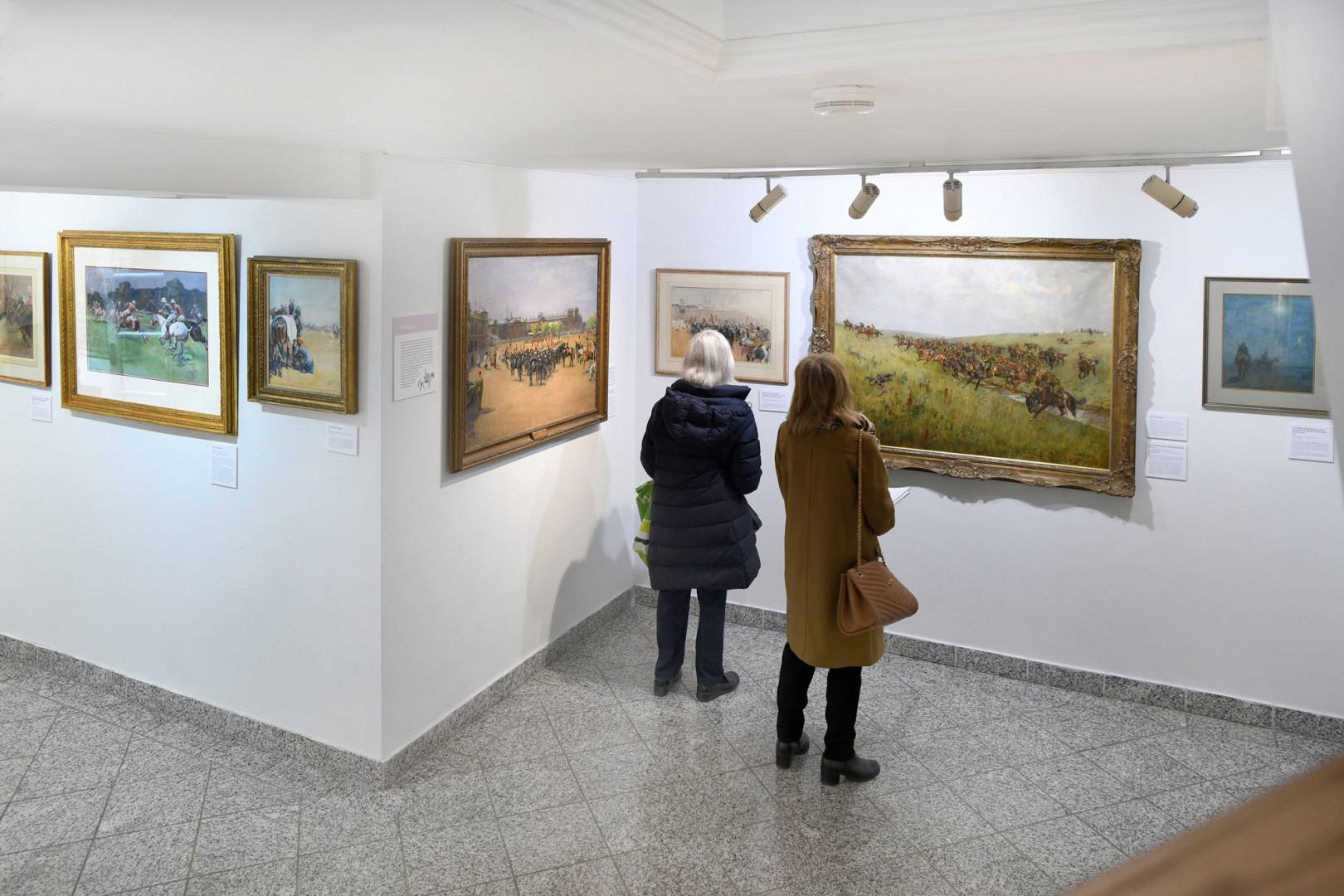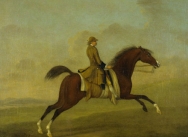A to Z of artists Seymour, James 1702 - 1752
James Seymour was born in London in about 1702, the son of a prosperous banker, goldsmith and diamond merchant of Mitre Court, Fleet Street. James Seymour Snr. was also an amateur artist, a founder member of the St Luke’s Academy and a member of the Society of Virtuosi of St Luke. He collected, and may have dealt in, pictures. With such a background, young James Seymour came to drawing early in life with a predilection to paint horses. The sporting artists John Wootton (q.v.) and Peter Tillemans (q.v.), who were members of the St Luke’s Society, may have inspired, if not actually taught, him to paint. His earliest known picture is of the racehorse Old Fox with his groom, dated 1721, and from that time on there was a steady flow of portraits of horses, predominantly racers and hunters, and stable scenes painted in a more angular and clear-focused style than those by Wootton. Many of these pictures were engraved and published in London by John Cheny and Thomas Butler from 1740 until after the artist’s death. Through familiarity with the racehorse portraits it is sometimes forgotten that he painted large hunting scenes, but with these and even in the artist’s well known picture of the famous Chaise Match at Newmarket on 28 August 1750, horses and figures are painted in a stylised manner. Due to the surprising vigour of his black and red chalk drawings one could be forgiven for thinking they were by another hand so different are they to his ponderous paintings. A collection of 197 of these sketches came to light in 1936 bringing a revision to the previous critics’ faint praise of Seymour as being only a painter of pictures of "stilted charm". Much is made of James Seymour being a spendthrift rake. George Vertue went as far as to blame him for his father’s bankruptcy in 1737 (he died in 1739), despite the son then being at the height of his painting career. Certainly James Seymour Jnr. was at home among a circle of sportsmen whose criteria for a happy life included spending time racing, gambling, coursing and cocking. In such activities, James Seymour’s luck ran out in the late 1740s and he died destitute at his Southwark lodgings on 30 June 1752, surrounded by unfinished paintings.
Other works of art you may be interested in
From the library
| Shelf No Year |
Title Author |
Publisher Notes |
|---|---|---|
| E.Sey. 1a |
Seymour, James |
Copyright © 2025 BSAT, All rights reserved
This website uses cookies and similar technologies to give you the very best user experience, including to personalise advertising and content. By clicking 'Accept', you accept all cookies.



